Morocco Desert Tour Guide: Planning Your Perfect Sahara Adventure
As someone who has traversed Morocco’s deserts multiple times, I’ve created this comprehensive Morocco desert tour guide to help you plan an unforgettable journey. From choosing the right tour route to packing essentials and experiencing authentic Berber culture, this guide covers everything you need to know before embarking on your Sahara adventure.
Understanding Morocco’s Deserts: More Than Just Sand
When most people think of Moroccan deserts, they picture the endless sand dunes of the Sahara. While these iconic landscapes are certainly the highlight, Morocco’s desert regions offer remarkable diversity that often surprises first-time visitors.
The Sahara Desert in Morocco
The Sahara is the world’s largest hot desert, spanning 12 countries across North Africa. Morocco claims a relatively small but spectacularly beautiful portion of this vast desert. The most accessible and visually stunning parts of the Moroccan Sahara are:
Erg Chebbi
Located near the village of Merzouga, Erg Chebbi features the tallest and most dramatic sand dunes in Morocco, reaching heights of up to 150 meters. These stunning orange-hued dunes are what most people envision when dreaming of a Sahara adventure. Most desert camps are situated within or around these magnificent dunes.
Erg Chigaga
Less accessible but more remote and wild than Erg Chebbi, these dunes near M’hamid offer a more secluded desert experience. Reaching Erg Chigaga requires a longer journey by 4×4 vehicles, but many travelers find the extra effort worthwhile for the unspoiled landscapes and fewer tourists.
Beyond the Sand Dunes
Morocco’s desert landscapes are surprisingly varied. Your journey to the Sahara will take you through:
- Rocky plateaus and hamadas (stone deserts)
- Dramatic gorges carved by ancient rivers
- Lush palm oases providing striking contrast to the arid surroundings
- Ancient kasbahs and fortified villages
- The majestic Atlas Mountains that separate the desert from Morocco’s coastal regions
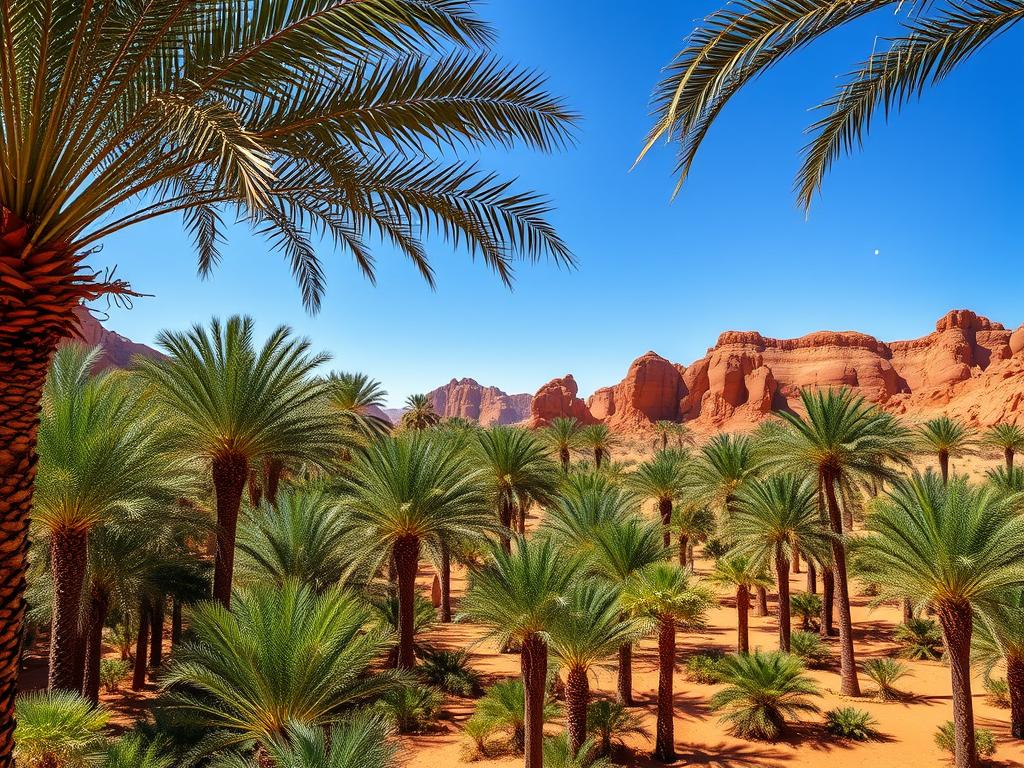
A lush palm oasis creating a striking contrast to the surrounding desert landscape
Understanding this diversity helps set realistic expectations for your desert tour. The journey to and from the sand dunes is filled with fascinating landscapes and cultural experiences that are an integral part of the adventure.
Popular Morocco Desert Tour Routes
Most desert tours in Morocco follow established routes from major cities to the Sahara. Each route offers different highlights and experiences. Here are the most popular options:
Marrakech to Merzouga (Erg Chebbi)
This is the most common route, typically completed as a 3-day tour. The journey from Marrakech to the Erg Chebbi dunes near Merzouga covers approximately 560 km (350 miles) and takes you through diverse landscapes and cultural sites.
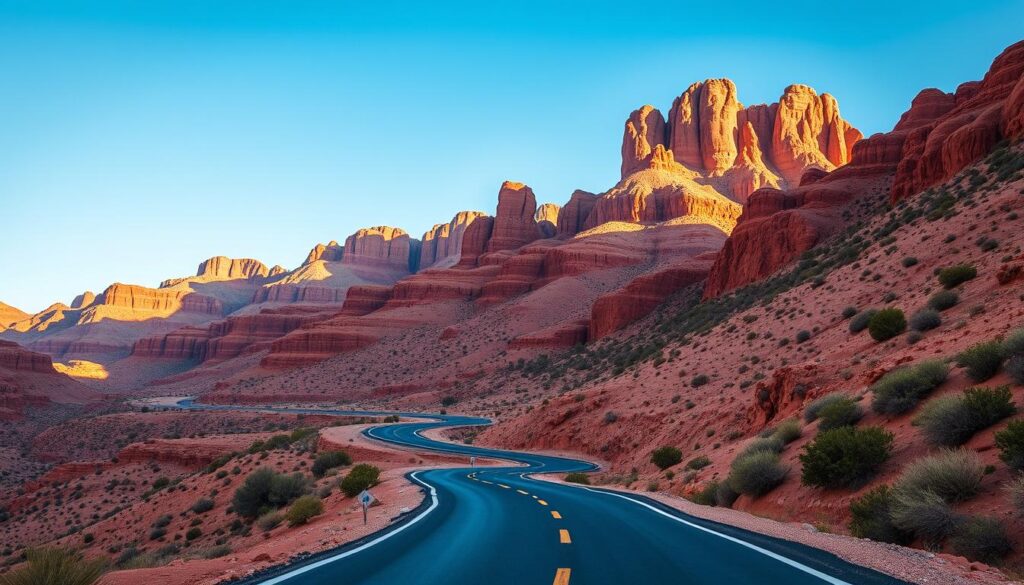
The scenic road through the Atlas Mountains on the Marrakech to Merzouga route
Key Stops Along This Route:
- High Atlas Mountains – Cross the Tizi n’Tichka pass (2,260m), offering breathtaking mountain views
- Ait Ben Haddou – UNESCO World Heritage site and famous ksar (fortified village) featured in numerous films
- Ouarzazate – Known as “The Door of the Desert” and home to film studios where many Hollywood desert scenes were filmed
- Dades Gorge – Dramatic canyon with unique rock formations and the famous “Monkey Fingers” cliffs
- Todra Gorge – Impressive limestone canyon with 300m high walls
- Merzouga – Gateway village to the Erg Chebbi dunes
This route provides an excellent overview of Morocco’s diverse landscapes, from mountains to valleys to desert, making it ideal for first-time visitors. The standard 3-day tour feels rushed to many travelers, so consider a 4-day option if your schedule allows.
Fes to Merzouga (Erg Chebbi)
Starting from Fes, this route is shorter (approximately 470 km or 290 miles) and offers a different set of attractions. It’s an excellent choice if you’re planning to visit northern Morocco.
Key Stops Along This Route:
- Ifrane – Known as “Little Switzerland” for its Alpine-style architecture
- Cedar Forest of Azrou – Home to Barbary macaques (wild monkeys)
- Midelt – Apple-growing region nestled in the High Atlas
- Ziz Valley – Stunning palm oasis stretching for kilometers
- Erfoud – Known for fossil mining and date production
- Merzouga – Gateway to the Erg Chebbi dunes
Many travelers choose to start their desert tour from Fes and end in Marrakech (or vice versa), which allows you to experience both routes without backtracking. Tour operators readily accommodate this one-way option.
Marrakech to M’hamid (Erg Chigaga)
This less-traveled route takes you to the more remote Erg Chigaga dunes. The journey to M’hamid is similar to the Merzouga route until Ouarzazate, after which it continues south through the Draa Valley.
Key Stops Along This Route:
- Draa Valley – Morocco’s longest river valley, lined with date palms and kasbahs
- Zagora – Desert town with the famous “52 days to Timbuktu” sign
- M’hamid – The last outpost before the deep desert
- Erg Chigaga – More remote dunes requiring 4×4 transport from M’hamid
This route offers a more authentic and less crowded desert experience but requires more time (minimum 3 days, ideally 4-5) to fully appreciate.
Ready to explore these routes?
Check out top-rated desert tours that follow these popular itineraries.
Key Highlights of a Morocco Desert Tour
While the journey through Morocco’s diverse landscapes is fascinating, certain experiences stand out as the true highlights of any desert tour. Here’s what you can look forward to:
Camel Trekking Across the Dunes
The quintessential Sahara experience involves mounting a camel and slowly making your way across the undulating sand dunes. Most tours include a 1-2 hour camel trek at sunset to reach your desert camp, followed by another trek at sunrise the next morning.
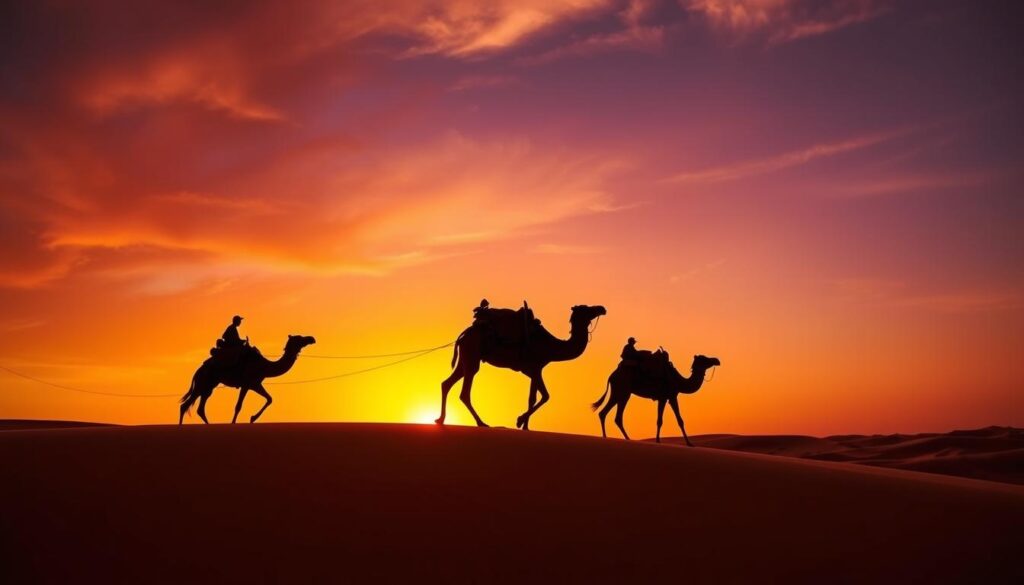
A camel caravan trekking across the Sahara dunes at sunset
While romantic in concept, be prepared for the physical reality of camel riding. The swaying motion can be uncomfortable, and you’ll likely feel some muscle soreness afterward. Nevertheless, this traditional mode of desert transport provides an authentic experience and spectacular photo opportunities.
Camel Trekking Tip: Wear long pants to protect your legs from chafing against the camel saddle. A scarf is also essential to protect your face from sand, especially if winds pick up.
Overnight in a Desert Camp
Spending a night in the Sahara is magical. Desert camps range from basic to luxurious, but all offer the incredible experience of sleeping surrounded by sand dunes under star-filled skies.
Types of Desert Camps:
Standard Camps
These offer basic but comfortable accommodations with shared facilities. Expect traditional Berber tents with mattresses on the floor, communal dining, and basic toilets. These camps typically host larger groups and offer drumming and music around a campfire in the evening.
Luxury Camps
For those seeking more comfort, luxury camps provide proper beds, private bathrooms with hot showers, electricity, and higher quality meals. These camps host fewer guests, offering a more exclusive experience at a premium price.

A traditional Berber desert camp nestled among the Sahara dunes
Spectacular Sunrise and Sunset Views
The changing colors of the sand dunes during sunrise and sunset create unforgettable visual experiences. The soft morning light gradually illuminating the rippled dunes or the golden evening glow casting long shadows across the sand are photographer’s dreams.
Most tours schedule activities to maximize these magical moments. Expect to rise early (around 5:30 AM) to climb a dune for sunrise views – the effort is well worth the reward.
Stargazing in the Desert
Far from city lights, the Sahara offers exceptional stargazing opportunities. On clear nights, the sky comes alive with countless stars, visible constellations, and even the Milky Way. Many travelers describe this as one of the most awe-inspiring aspects of their desert experience.
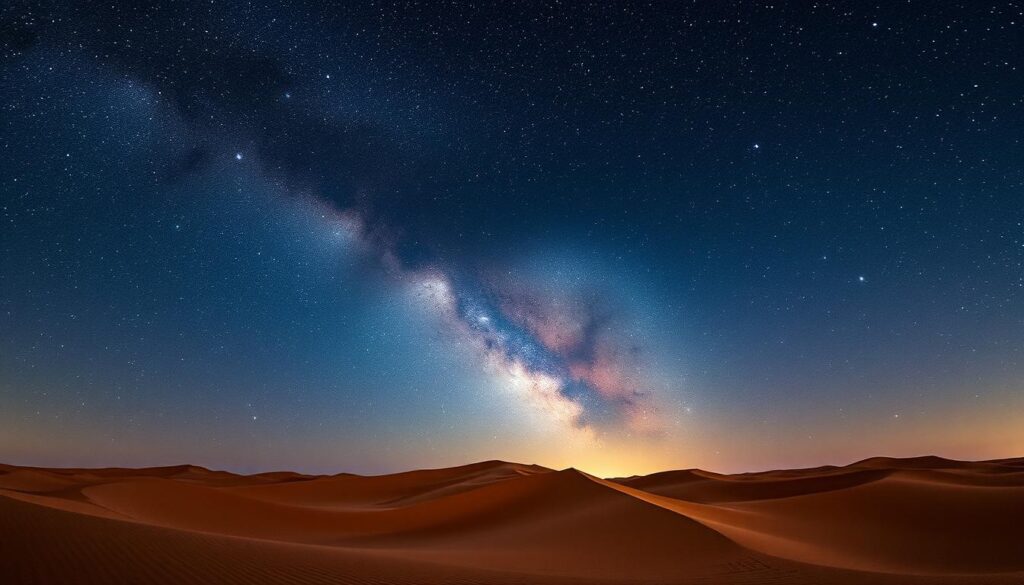
The breathtaking night sky over the Sahara Desert reveals the Milky Way in all its glory
Desert Activities
Depending on your tour and camp, you might have the opportunity to enjoy additional activities:
- Sandboarding down the dunes
- 4×4 excursions deeper into the desert
- Traditional music and drumming around a campfire
- Cooking demonstrations of traditional Berber dishes
- Guided walks to learn about desert ecology
When booking your tour, ask about which activities are included and which might be available as add-ons.
Cultural Experiences on a Morocco Desert Tour
A desert tour offers more than just natural beauty – it’s an opportunity to immerse yourself in Morocco’s rich cultural heritage. Here are some cultural highlights you’ll likely experience:
Berber Villages and Nomadic Life
The indigenous Berber people have inhabited North Africa for thousands of years, developing unique traditions adapted to desert life. Many tours include visits to Berber villages or encounters with semi-nomadic families still living traditional lifestyles.
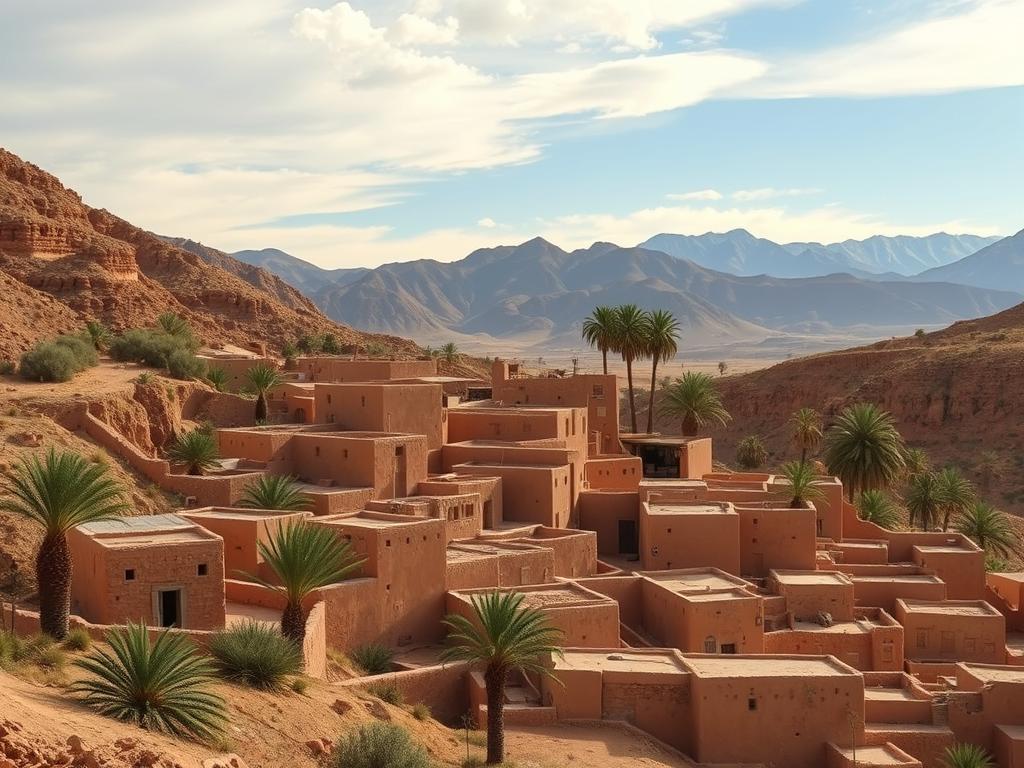
A traditional Berber village with characteristic mud-brick architecture
These encounters provide insights into sustainable desert living practices that have remained largely unchanged for centuries. You might witness traditional weaving, bread-making in communal ovens, or agricultural techniques that maximize scarce water resources.
Ancient Kasbahs and Ksour
Your desert journey will take you past numerous kasbahs (fortified houses) and ksour (fortified villages) that once protected inhabitants and served as important trading posts along caravan routes.
The most famous is Ait Ben Haddou, a spectacular ksar and UNESCO World Heritage site that has featured in numerous films including Gladiator and Game of Thrones. However, you’ll encounter many less famous but equally fascinating structures throughout your journey.
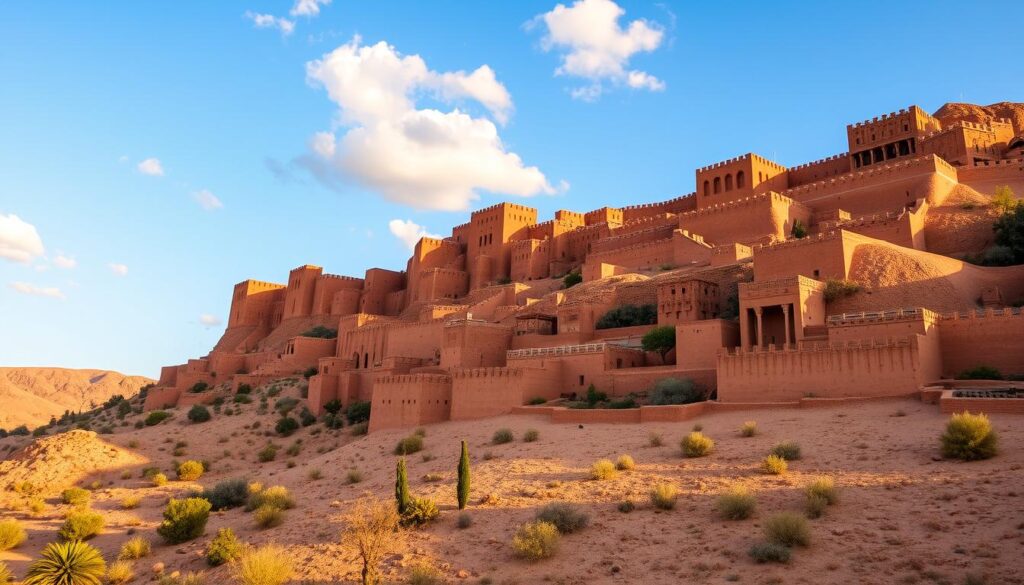
The magnificent ksar of Ait Ben Haddou, a UNESCO World Heritage site
Traditional Berber Music and Entertainment
Evening entertainment at desert camps typically includes traditional Berber music performed around a campfire. Rhythmic drumming on traditional instruments like the bendir (frame drum) accompanies songs that have been passed down through generations.
Some camps also organize demonstrations of traditional dances or storytelling sessions that share Berber legends and folklore. These cultural exchanges provide a deeper connection to the region beyond its physical beauty.
Moroccan Cuisine in the Desert
Food is an important aspect of Moroccan culture, and desert tours showcase traditional cuisine. Expect to enjoy:
- Tagine – Slow-cooked stews named after the conical earthenware pots they’re prepared in
- Couscous – Steamed semolina typically served with vegetables and meat
- Berber Pizza (Medfouna) – A stuffed bread traditional to the desert regions
- Moroccan Mint Tea – The national drink, ceremonially poured from height to create a frothy top
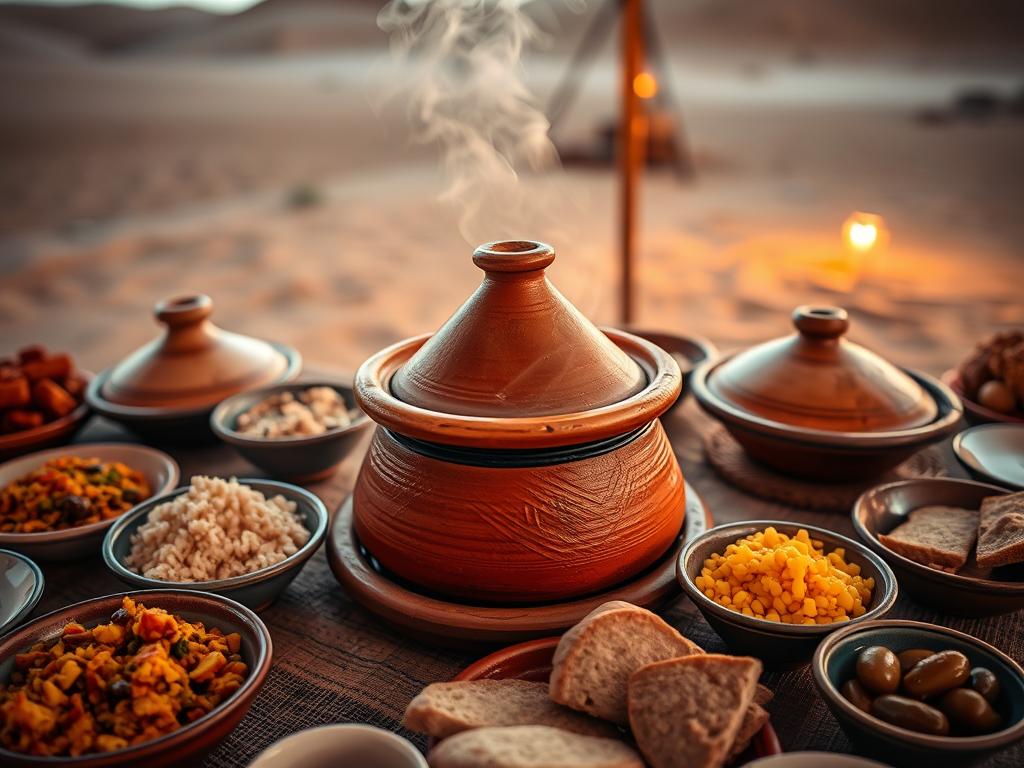
A traditional Moroccan tagine being served at a desert camp
Many camps prepare food using traditional methods, such as baking bread in the sand or slow-cooking tagines over open fires, adding to the authentic experience.
Planning Your Morocco Desert Tour: Essential Tips
Best Time to Visit the Sahara Desert
The Sahara’s extreme climate makes timing your visit crucial for comfort and enjoyment:
| Season | Months | Daytime Temp | Night Temp | Recommendation |
| Spring | March-May | 25-35°C (77-95°F) | 10-15°C (50-59°F) | Ideal time to visit |
| Summer | June-August | 40-45°C+ (104-113°F+) | 20-25°C (68-77°F) | Avoid – extremely hot |
| Fall | September-November | 25-35°C (77-95°F) | 8-15°C (46-59°F) | Ideal time to visit |
| Winter | December-February | 15-25°C (59-77°F) | 0-5°C (32-41°F) | Pleasant days but cold nights |
The optimal times for a desert tour are spring (March-May) and fall (September-November) when temperatures are pleasant both day and night. Winter can be enjoyable during the day but nights get surprisingly cold, requiring warm clothing. Summer should be avoided due to potentially dangerous heat.
What to Pack for a Desert Tour
Packing appropriately ensures comfort during your desert adventure:
Essential Items:
- Lightweight, loose-fitting clothing that covers shoulders and knees (respectful of local culture)
- Warm layers for cool evenings (even in warm seasons)
- Comfortable walking shoes plus sandals
- Wide-brimmed hat and sunglasses
- Scarf or shemagh (can protect from sun, wind, and sand)
- High SPF sunscreen and lip balm
- Personal medications and basic first aid
- Toilet paper/wet wipes (not always available in desert facilities)
- Headlamp or flashlight (essential for navigating camps at night)
- Power bank (limited or no electricity in camps)
Optional but Recommended:
- Camera with extra batteries
- Binoculars for stargazing
- Small daypack for essentials during camel trek
- Insect repellent
- Hand sanitizer
- Swimwear (if your hotel has a pool)
- Small gifts for guides (not expected but appreciated)
- Reusable water bottle
- Light sleeping bag liner (for basic camps)
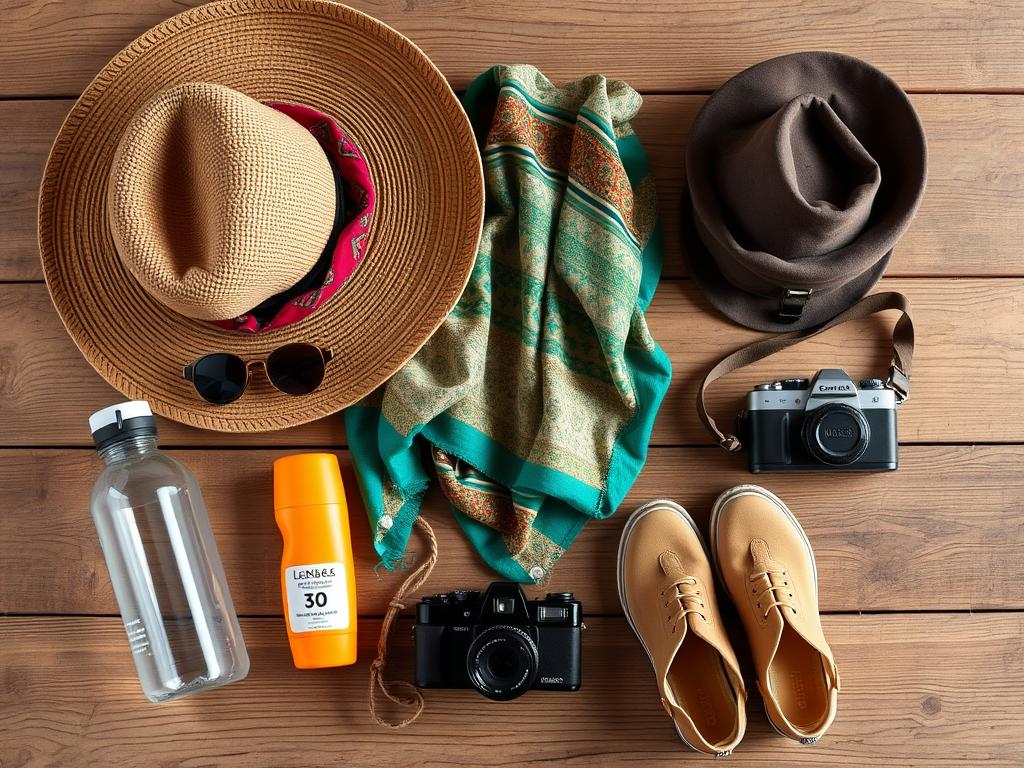
Essential items to pack for your Morocco desert tour
Packing Tip: For overnight desert trips, pack a small bag with just what you need for the desert camp. Your main luggage often stays at a hotel in Merzouga or M’hamid, as there’s limited space on camels or 4×4 vehicles.
Health and Safety Considerations
While desert tours are generally safe, being prepared for the unique environment is important:
- Hydration – Drink plenty of water, even if you don’t feel thirsty
- Sun protection – The desert sun is intense; use sunscreen, cover up, and seek shade when possible
- Food safety – Stick to bottled water and properly cooked foods
- Insurance – Ensure your travel insurance covers desert activities
- Communication – Cell service is limited in remote areas; inform someone of your itinerary
- Respect wildlife – Watch for scorpions and snakes (rare but present)
Most tour operators are experienced in managing these risks, but personal awareness enhances safety.
Choosing the Right Morocco Desert Tour Operator
With countless companies offering desert tours, selecting the right one can be overwhelming. Here’s how to make an informed choice:
Types of Desert Tours
Group Tours
Price Range: $80-150 per person (3 days)
Most affordable option with shared transportation (usually minivans) and larger desert camps. Ideal for solo travelers or those on a budget who enjoy socializing.
Pros: Lower cost, social atmosphere, fixed itinerary
Cons: Less flexibility, more crowded, potential for conflicting interests
Private Tours
Price Range: $200-400 per person (3 days)
Exclusive vehicle and guide, with customizable itineraries and often private or smaller desert camps. Perfect for families, couples, or friends traveling together.
Pros: Personalized experience, flexible schedule, privacy
Cons: Higher cost, less social interaction with other travelers
Luxury Tours
Price Range: $500+ per person (3 days)
Premium experience with high-end accommodations, gourmet meals, and exclusive activities. Suited for travelers seeking comfort without compromising on authenticity.
Pros: Maximum comfort, exceptional service, unique experiences
Cons: Significantly higher cost, potentially less “authentic” feel
What to Look for in a Tour Operator
- Reviews and Reputation – Check multiple platforms (TripAdvisor, Google, GetYourGuide) for consistent positive feedback
- Transparency – Clear information about what is and isn’t included in the price
- Local Knowledge – Operators employing local Berber guides offer more authentic cultural insights
- Ethical Practices – Responsible treatment of animals, respect for local communities, and environmental consciousness
- Safety Standards – Well-maintained vehicles and appropriate safety measures
- Flexibility – Willingness to accommodate reasonable special requests
Recommended Tour Operators
Based on consistent positive reviews and ethical practices, these operators offer reliable desert experiences:
Morocco Fabulous Travel
Specializes in customizable private tours with excellent English-speaking guides. Known for flexibility and attention to detail.
Best for: Private tours and custom itineraries
Starting from: $250 per person (3-day tour)
Desert Majesty
Established operator with strong environmental ethics and deep connections to local communities. Offers both group and private tours.
Best for: Authentic cultural experiences
Starting from: $180 per person (3-day tour)
Sahara Experience Tours
Budget-friendly group tours with reliable service and good-quality desert camps. Popular with younger travelers and backpackers.
Best for: Budget group tours
Starting from: $90 per person (3-day tour)
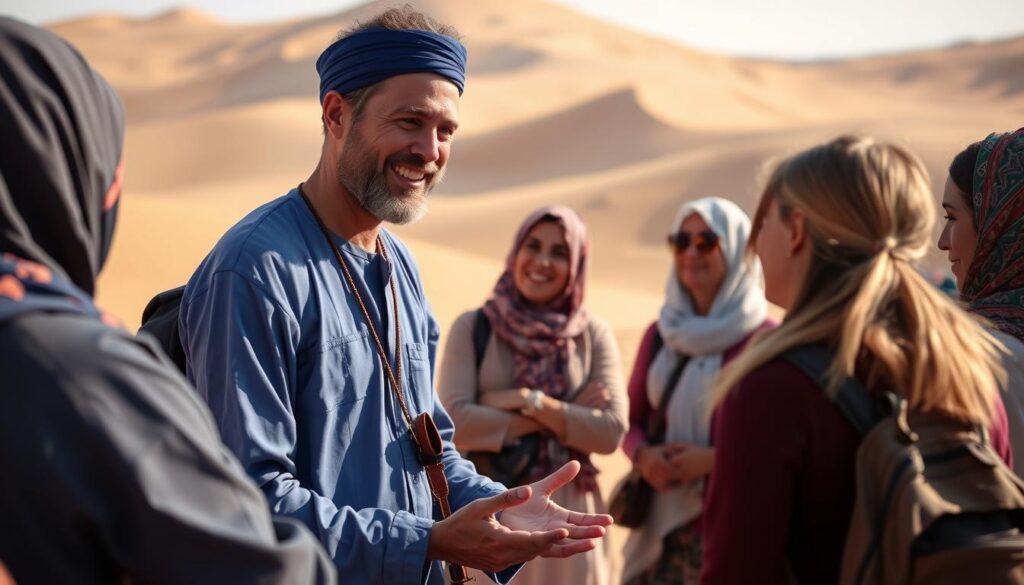
A knowledgeable local guide enhances your desert experience with cultural insights
Booking Tip: While booking in advance is recommended, especially during peak seasons, you can often find better deals by booking directly with local operators once in Morocco. However, this requires more flexibility in your schedule.
Budget-Friendly Desert Tour Options
Experiencing the magic of the Sahara doesn’t have to break the bank. Here are strategies for enjoying a desert adventure on a budget:
Group Tours vs. Independent Travel
For most travelers, joining an organized group tour offers the best value. These tours include transportation, accommodation, guides, camel trekking, and most meals for a single price, typically starting around $80-100 per person for a 3-day trip from Marrakech or Fes.
While independent travel might seem cheaper, the logistics of reaching remote desert areas and arranging activities separately often end up costing more in both money and time. The exception is for those with their own vehicle who are comfortable with self-guided exploration.
Cost-Saving Tips
- Travel in shoulder seasons (October-November or February-March) for lower prices and fewer crowds
- Book locally rather than online – prices are often 20-30% lower when booked in person in Morocco
- Negotiate respectfully – some price flexibility exists, especially for group bookings
- Consider a 2-day tour if time is limited, though 3 days offers a much better experience
- Share costs by forming a group with other travelers you meet in hostels or hotels
- Choose standard camps rather than luxury options – the star-filled sky looks the same from both!
Budget Tip: Many riads and hostels in Marrakech and Fes have partnerships with desert tour operators and can arrange tours at competitive rates. Ask at your accommodation for recommendations.
DIY Desert Experience
For the truly adventurous and budget-conscious, it is possible to create your own desert experience:
- Take public transportation (buses or grand taxis) to Merzouga or M’hamid
- Stay in a budget hotel in town (from $15-30 per night)
- Arrange a camel trek and overnight camp directly with local providers (from $30-50 per person)
This approach requires more time, flexibility, and basic French or Arabic language skills, but can significantly reduce costs while providing a more independent experience.
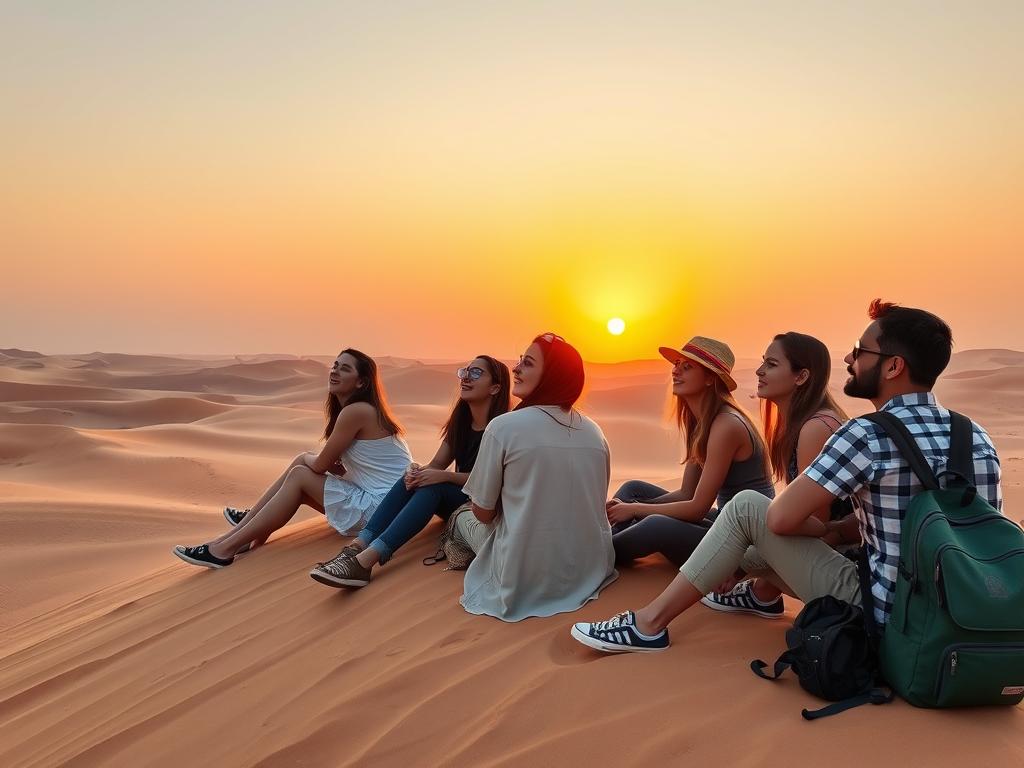
Budget travelers enjoying the sunset from the Erg Chebbi dunes near Merzouga
Preparing for Your Morocco Desert Adventure
A journey into Morocco’s deserts offers experiences that transcend typical tourism – moments of profound connection with nature, culture, and perhaps even yourself. The vast silence of the dunes, the brilliance of desert stars, and the warmth of Berber hospitality create memories that will stay with you long after you’ve returned home.
Whether you choose a luxury private tour or a budget group adventure, the key to a successful desert experience lies in proper preparation, realistic expectations, and an open mind. The desert has a way of surprising visitors – with its unexpected beauty, the resilience of its people, and the perspective it offers on what truly matters.
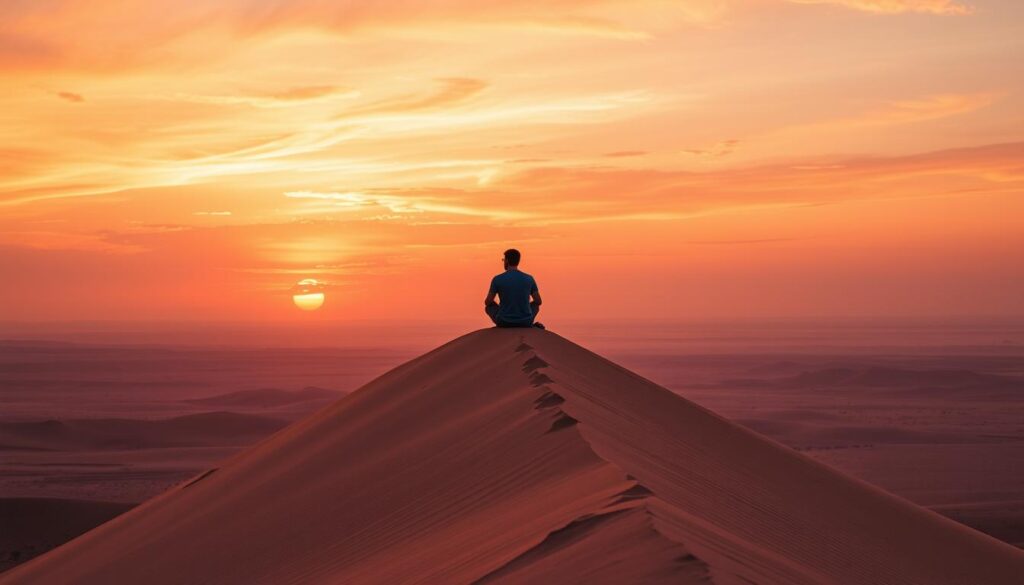
The magical experience of watching the sun rise over the Sahara dunes
As you plan your Morocco desert tour, remember that the journey itself – through mountain passes, ancient villages, and changing landscapes – is as much a part of the experience as the destination. Take time to absorb each moment, connect with local people, and appreciate the extraordinary natural beauty of this remarkable corner of the world.
Ready to Experience the Magic of the Sahara?
Book your Morocco desert tour with trusted operators offering authentic experiences at competitive prices.
How much does a typical 3-day Morocco desert tour cost?
Prices vary based on type and quality, but expect to pay $80-150 per person for standard group tours, $200-400 for private tours, and $500+ for luxury experiences. These prices typically include transportation, accommodation, most meals, and activities like camel trekking.
Is it safe to travel to the Sahara Desert in Morocco?
Yes, desert tours in Morocco are generally very safe. The main concerns are environmental (heat, sun exposure) rather than security-related. Reputable tour operators prioritize safety and are experienced in managing desert conditions. As with any travel, maintain awareness of your surroundings and follow guide instructions.
What’s the best time of year for a Morocco desert tour?
Spring (March-May) and fall (September-November) offer the most pleasant temperatures. Winter (December-February) has comfortable daytime temperatures but very cold nights. Summer (June-August) should be avoided due to potentially dangerous heat exceeding 45°C (113°F).

